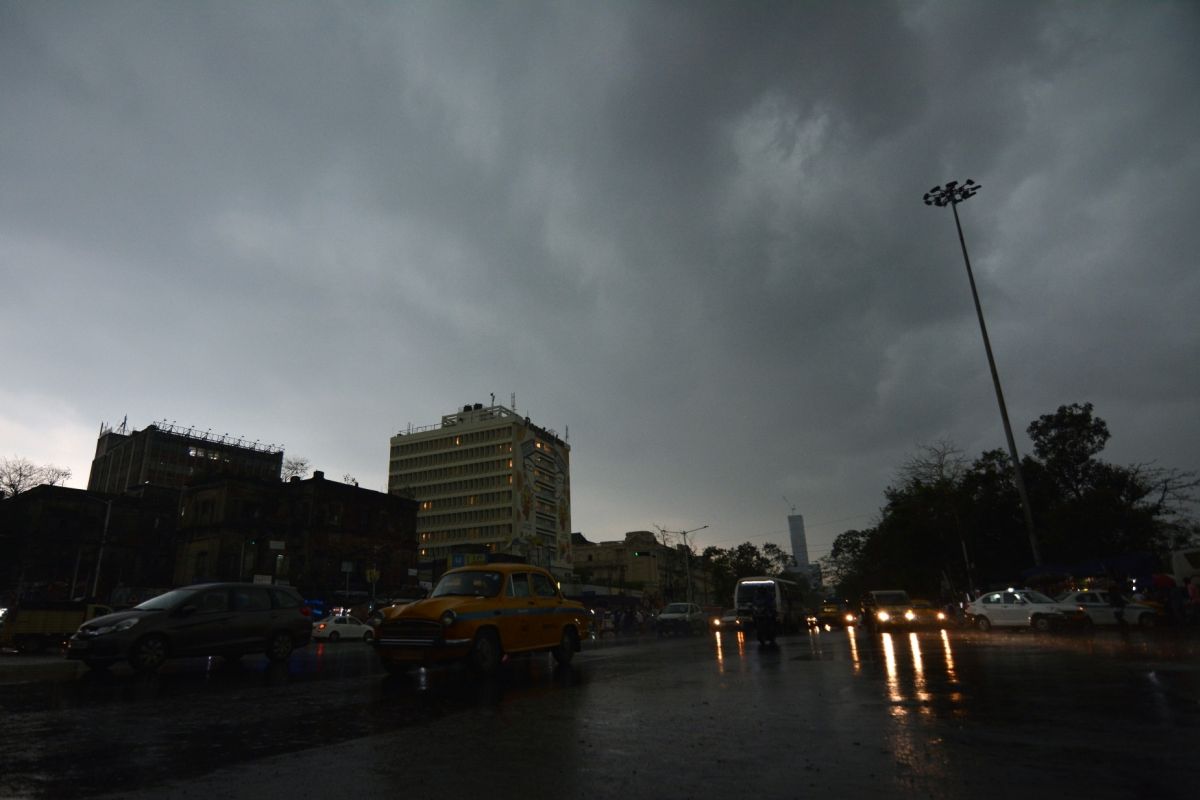Heritage bookstore in College St set to open new outlet
Dasgupta, the well-known heritage bookstore in the city, is going to open its outlet in south Kolkata on 1 May.
Who would have thought that large stretches of Behala, Tollygunge, Chittaranjan Avenue and New Alipore would go under water in February that is generally regarded as perhaps the most pleasant months of the year?

Nor'wester resulted in heavy rain in Kolkata. (Photo: IANS)
The city didn’t need an unseasonal storm just when it was steeped in myriad concerns – from disturbing developments in other parts of the country to personal concerns about children appearing for their final examinations. The Kolkata weather last week brought normal life to a halt with rain lashing the city for several days, destroying trees, creating traffic jams and making transport quite a nightmare.
The celebration of Saraswati puja should normally have marked the departure of what had been an authentic winter and the arrival of the much loved Basanta, the season of flowers and colours. The next best event is Doljatra but that seems to be far away. Blankets and pullovers that were washed and put away were pulled out again.
One needed protection from the gusty winds, especially for children who stayed up at night for crucial last-minute preparations. But the sudden change in the weather caused widespread disruptions despite warnings from the weather office. Who would have thought that large stretches of Behala, Tollygunge, Chittaranjan Avenue and New Alipore would go under water in February that is generally regarded as perhaps the most pleasant months of the year? Popular notions about the weather in Kolkata are coming under a cloud. One explanation is that nor’westers normally expected a month from now have arrived early. Whether or not the Met Office agrees with the theories on climate fluctuations, the truth is that life in the city tends to be thrown out of gear on the slightest pretext.
Advertisement
Worst affected are commuters who make use of the underground or the more affluent device of app cabs.
Lightning struck the electric wire inside the Metro car shed in Tollygunge and any disruption for around 30 minutes was bound to have a chain effect. If anyone was thinking of yellow or app cabs, it turned out to be a cruel option on account of the pocket pinch that is difficult to endure during the kind of steady shower that occurred last week. One could forget about pavement shopping. It was a different story with vegetable sellers thrown out of their regular spots on the thoroughfares and market stalls making the best use of the additional surge of customers. One could think of tempting culinary options like the steaming hot plate of khichuri relished with fried brinjals and chutney – delicacies associated with the monsoon.
But there was also the uncertainty of the cook who found an excuse to stay away and grocery shops in the locality that pulled down their shutters during the storm. A more alarming prospect – which one hopes proves to be unfounded – is the large-scale destruction of this year’s mango crop. What is the monsoon without Bengal’s most juicy joy? A few owners of private gardens have reported that the storm has blown away many branches holding the fruit.
There could be better news from other parts of the state. As of now, citizens can only hope that garbage disposal, drainage and other essential services will return to normal. The city has absorbed difficult situations in the past and, true to tradition, it hasn’t taken too long to throb with its familiar sights and sounds
Advertisement